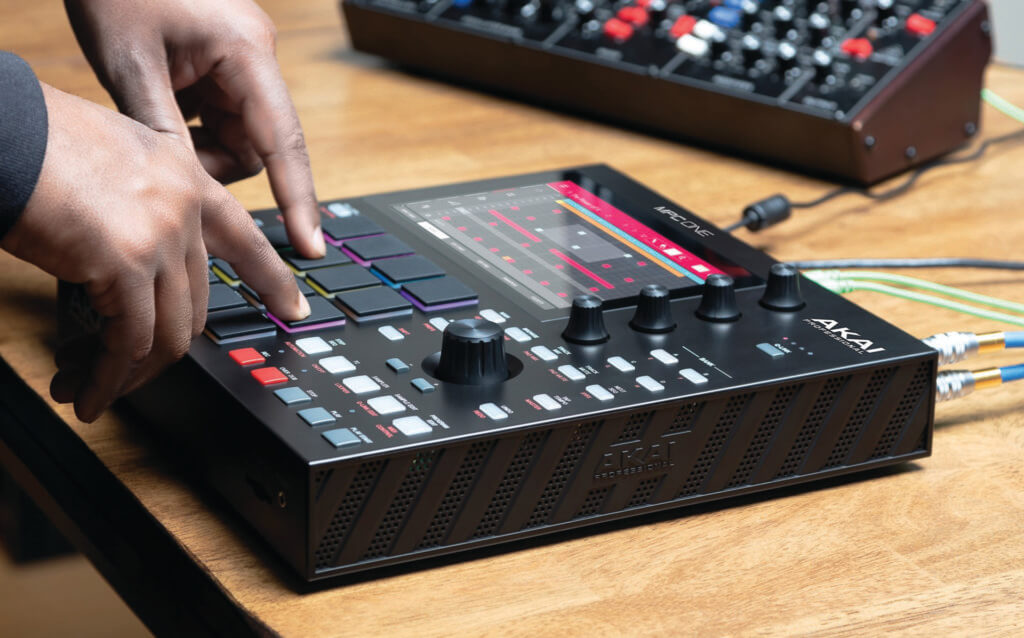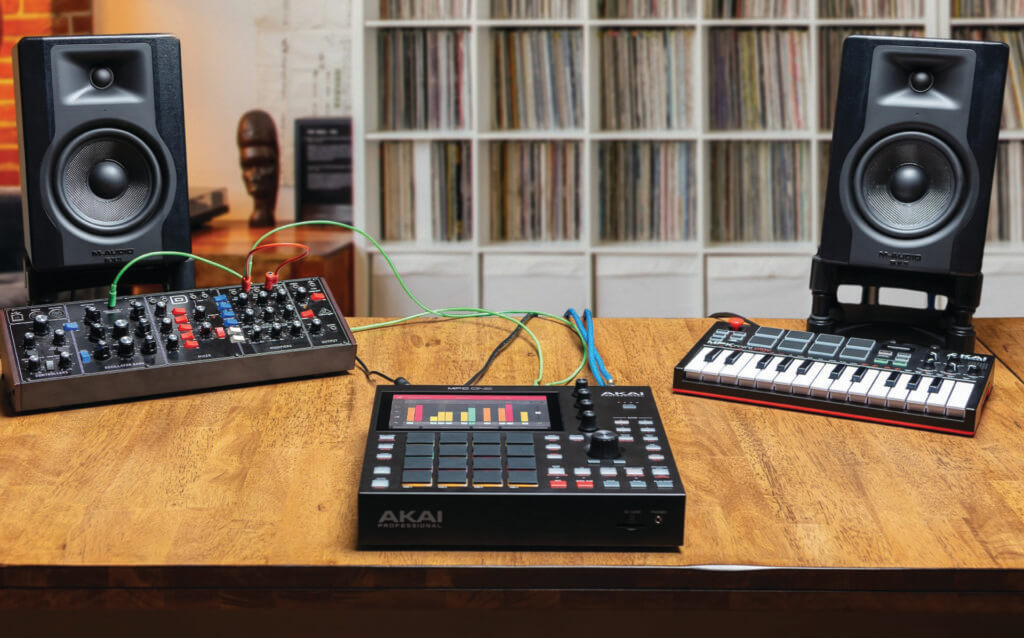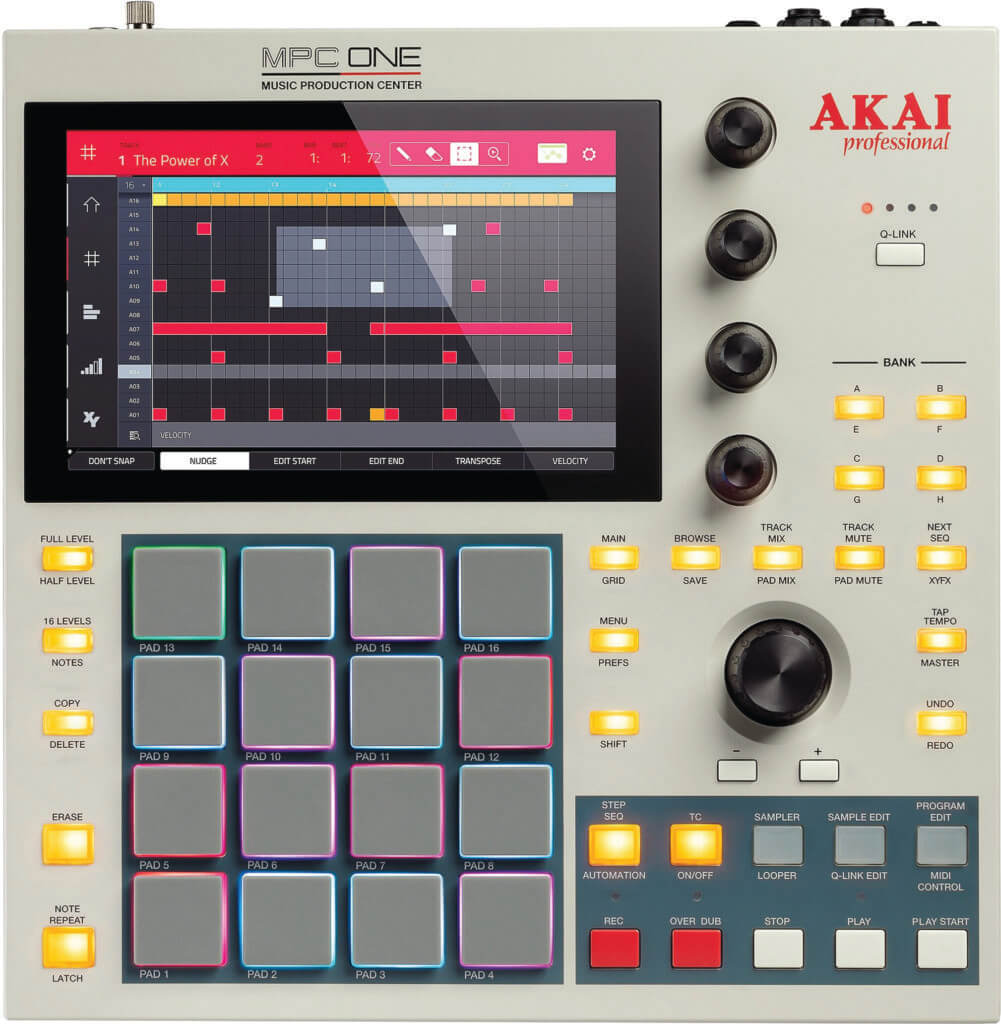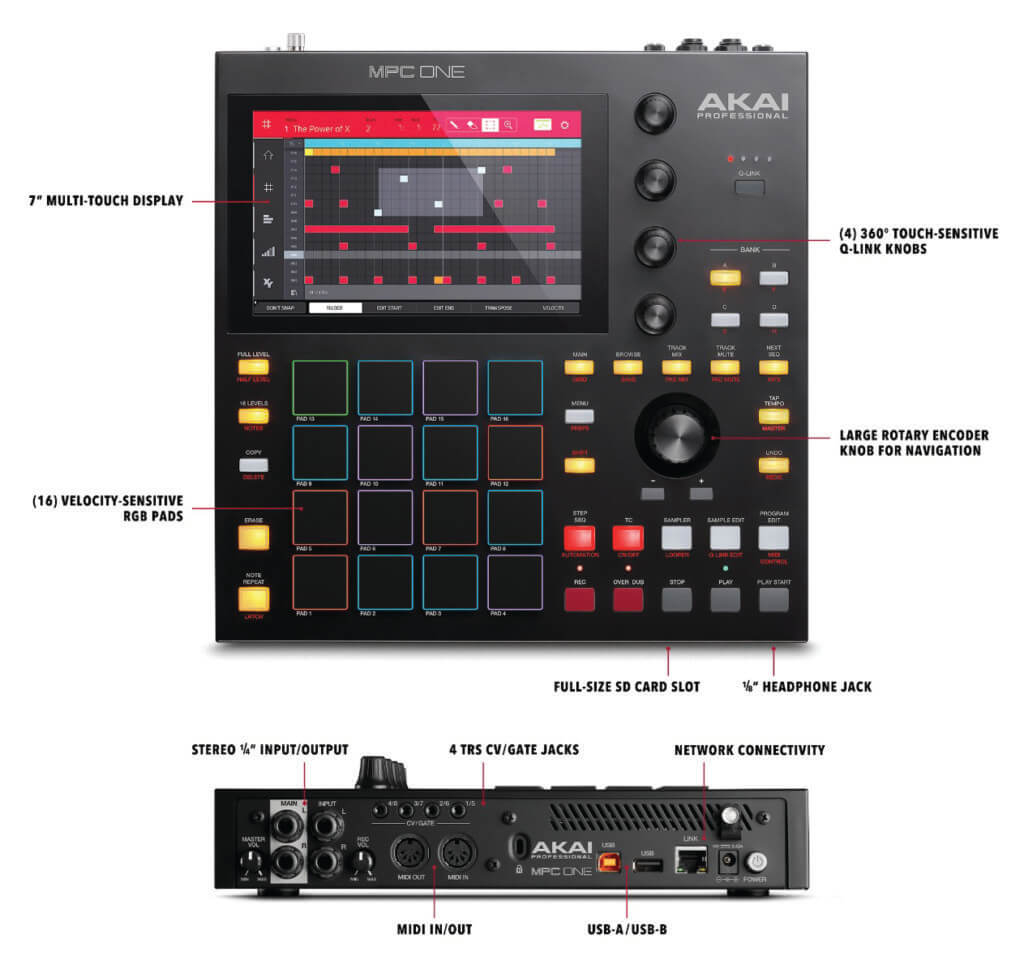When we recently reviewed the new MPC One from Akai, we instantly fell in love. Here’s a snippet, in case you missed it:
“If you want a piece of gear that can serve as the centerpiece of your beat-making production hub, this could be your gateway drug, no questions. And if you need a few more perks, like phono inputs or a battery for true mobile production, check out the MPC Live II. But we think the MPC One hits the sweet spot for those getting into programmed drums, sampling, and backing tracks. We even think it might be a killer DAW replacement for solo artists – which we’ll cover more in-depth in a future column.”
And that brings us up to speed. If you’re a singer/songwriter and have never even heard of the MPC, let alone touched a sampler or drum pads before, no worries. This isn’t your grandfather’s MPC. Today’s units (we’ll focus on the MPC One as it’s the most budget-friendly) all have touch interfaces and tactile controls that’ll come to you intuitively if you’ve ever used a smartphone or tablet before.

So why are we recommending a product that’s almost been exclusively used for hip-hop production and DJ booths the past 30 years? Well, because what producers and DJs have come to learn since 1987 is that the MPC workflow is like none other, and that, while it’s traditionally been a sampler and drum machine mainstay, that workflow can actually be adapted by pop and rock songwriters looking for a way to break free of their current trappings.
Need some inspiration to get over that case of writer’s block? Let’s explore.
A DAW REPLACEMENT FOR DEMOS AND SONG IDEAS
Akai won’t come out and say it, but we will. The MPC is and can be a standalone DAW machine (not maschine, get it?), flat out. And one of the reasons we champion its use by singers, songwriters and those just wanting to quickly demo track is because you can start laying your tracks down right away, and leave the distractions of your PC and Mac behind. No more email dings, social media updates, someone going live on Instagram, it’s all gone. Unplug from the world and let your creativity flow.

It may take a few minutes to get used to, but once you’ve got the workflow down, you’ll realize what MPC-heads call sequences are just tracks, and that with the touch of a finger, you can start layering vocal samples, horn hits, programming drumbeats using the industry-standard pad inputs, and even start throwing in some samples or synth chords playable at the touch of a pad, in real-time, any time.
We’ve built entire songs using the standalone MPC One, and it was a breath of fresh air. The terminology is simple once you know the jargon: programs are just a sound source like drums or sample-based keys, and sequences are the basic building blocks of your songs, which can contain samples, synths, recorded instruments, drum programs, MIDI programs, key programs, etc.
EXPLORE SAMPLING AND LAYERING FOR CREATIVE INSPIRATION
As songwriters, it’s often hard to come up with something new that hasn’t been done. And while many focus on lyrics as their primary source of inspiration, don’t neglect the sonics. With an MPC you can easily sample ANYTHING and map it across the pads to play across chromatic or scale-based pitch patterns. So yes, while traditional sample takes drum breaks, horn stabs and the like, you can sample the sound of your kitchen faucet, map it across the pads, and add some interesting textures to an otherwise bog-standard sounding track. Try it.

With the MPC, you can also layer until your heart’s content, just like the DAW you might be used to. While hip-hop producers typically utilize this to create short 2 or 4 beat patterns or bars to rap over as the basis of their tracks, you can get as creative as you want and there’s nothing to say you can’t create sequences that contain verse, chorus and bridge ideas, then try linking them together as full songs.
Use the MPC’s capabilities as creative fuel and try new things. You might just find “playing” the sound of an electric pencil sharpener is just the thing your backing track needs to sound unique (ask us how we know).
LEARN HOW FINGER DRUMS CAN SPICE UP YOUR TRACKS
One of the main attractions to any MPC, from vintage to entry-level to fully-loaded, is the drum pads and iconic grid layout. There’s a reason that finger drummers on YouTube and TikTok make jaws drop with these things. They feel great, offer velocity sensitivity for dynamics and with even the built-in drum programs can have you creating unique rhythm tracks that would be impossible on acoustic drums (not to mention, most folks don’t have a drum set hanging around).

You can load your own custom drum kits from the samples built right in or explore the Akai website for more unique sounding kits to download. Again, the real magic is all created in a standalone piece of hardware; you can leave the PC behind to start creating once you’ve found samples if you want to explore add-on packs (you don’t need to, just an option).
Either way, just start playing away. Learn where the snare and hi-hats are typically located, where the bass drum sits and come up with a basic beat. Now add to it, now play it harder and softer. After a few minutes, you won’t want to put it down. Today’s samples sound amazing and can fool even the most experienced listeners into thinking that well-programmed drums were played live. I still can’t tell if the Strokes really have a drummer or if they’ve been punking us for 20 years.
Color coding certainly makes things easy on the beginner, so start to learn how the colors change underneath the grid and what sounds are associated with each pad. It’s not as intimidating as it looks, and you might surprise yourself with the amazing new rhythm tracks you’ve added to your demos.
ADD NEW SOUNDS TO YOUR EXISTING TONE PALETTE
One of our favorite recommendations is something that doesn’t get nearly enough attention. Yes, there are key programs built into the MPC that will enable you to perform cool sampled instruments using the pads (we love the Rhodes electric pianos and organs, especially). And yes, it’s awesome that you can lay out the pads to play in scale mode or chord mode to enable easy melodic playing, chord changes and other harmonies.
But the hidden gem? The real juice? You can sample your favorite hardware synthesizers automatically and map them chromatically across the grid. Take your favorite synthesizers with you wherever you go and start playing, without the big bulky keyboards! Got a friend with a Jupiter 8? Yeah, you’re never gonna afford it. Now you don’t have to. Add lush synths to your song by using the auto-sampler and get ANY outboard synth ONboard in seconds.
I’d love to own an original Minimoog for basslines and leads. Now I can dial in patches I love using a friend’s Moog, autosample them, adjust the scale (let’s say I only want to play pentatonic notes) and rip away anytime, anywhere. It works incredibly well (we were dubious) and opens up your sound library to the entire sonic pallet the world has to offer.
==================
While this hasn’t been an in-depth exploration of all the MPC has to offer (we’ve barely scratched the surface), we hope it’s maybe sparked something inside you to explore further, even if it’s just the curiosity to try out new bits of hardware to assist in your writing process. Hardware that may not have been on your radar before, but which offers up some unique and inspiring solutions to the monotony of doings things the way you (and your peers) have always done them.
For more information, please visit https://www.akaipro.com/mpc-one
